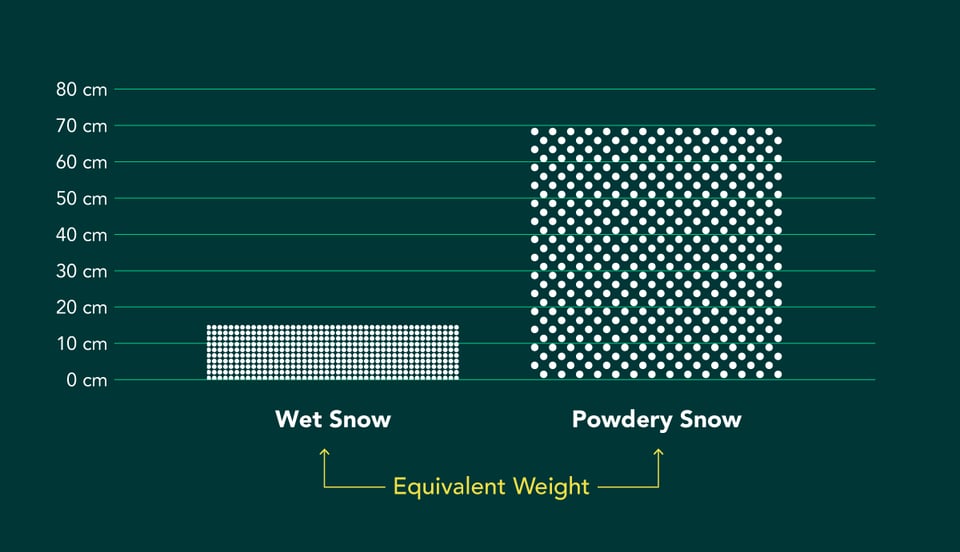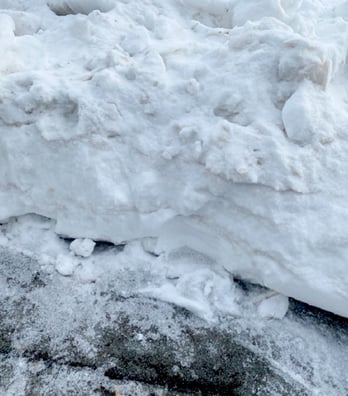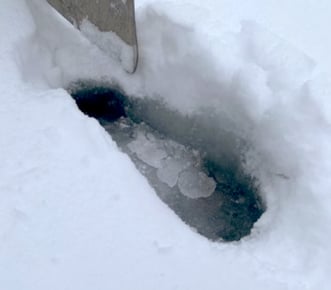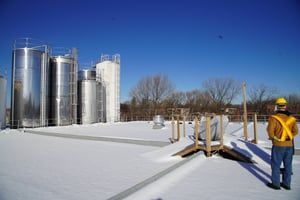Roof Snow Removal: Snow Height Is Not Reliable
.jpg?width=1200&height=630&name=tensio-blogue-hauteur-neige-6%20(1).jpg)
At first glance, the snow load on the roof of your buildings may seem low, but... is it really?
Many organizations rely on the height of the snow to determine whether or not it's time to plan a snow removal operation on the roofs of their buildings.
Contrary to popular belief, however, this figure is not a reliable or accurate indicator of the level of stress which is placed on your building structure by the weight of the snow accumulation, and here are three reasons why:
1. The Height of the Snow Does Not Tell You How Structurally Stressed Your Buildings Are
Not All Locations on Your Roof Have the Same Load Bearing Capacity
- What year (and therefore under what edition of the National Building Code) was your building built
- Does your building include additions or modifications that were built under other editions of the NBC?
The National Building Code has been updated over time and adjusted to new environmental realities, which means that two sections of the same building, or two neighboring buildings, may not have the same load bearing capacity.
For example, a building built in 1965 will not necessarily have been designed in the same way as its annex built in 1998, or its extension built in 2015.
.png?width=960&height=504&name=Article%2002%20-%20EN%20-%20Illustration%20-%20tensio-plan-batiment%20(1).png)
It's also important to keep in mind that your buildings' roofs don't necessarily have an equal and uniform load bearing capacity across their entire surface. Location X on your roof may therefore support a much lighter weight load than location Y, depending on changes in elevation or the presence of equipment, for example.
Load Bearing Capacities Also Vary According to the Region in Which Your Building Is Located
What's more, the standards set out in the National Building Code have also changed, depending on the location of the construction, and according to a sampling of precipitation statistics that have been recorded over the past four decades.
| City | Basic Load (kPa)* | Basic Load (lbs/ft2)* |
| Montreal | 2.06 | 43 |
| Rouyn-Noranda | 2.39 | 50 |
| Chicoutimi | 2.87 | 60 |
| Quebec City | 3.21 | 67 |
| Rimouski | 3.54 | 74 |
For example, the NBC considers the fact that it snows more in Rimouski than in Montreal.
This means that a building in Rimouski will normally be built more robustly than one in Montreal, since buildings in Rimouski must bear more loads than those in Montreal.
So, while a 3-foot snow load may create a similar bearing load; this does not correspond to a similar level of stress on buildings in Rimouski as Montreal. Because the buildings in Rimouski have been built with a greater stress capacity than those in Montreal.
2. The Height of Snow Is Not Representative of Its Actual Weight
The weight of a snow load on a roof varies greatly according to its composition, which necessarily has an impact on the stress of a building's structure.
- EIs the snow on the roof of your building freshly fallen and powdery?
- Is it wet, waterlogged and therefore much denser and compact?
- Does it contain several layers of ice from the various snowfalls since the start of winter?
Obviously, wet snow is considerably heavier than powdery (or fresh) snow, since it contains water, whereas powdery snow is 90% air. It goes without saying that the load caused by the weight of this type of snow will not have the same impact as a load of wet, waterlogged snow.
For example, the weight of 15 centimetres of wet snow is equivalent to that of 70 centimetres of snow powder!

The height of the snow on a roof can therefore not accurately indicate the real weight of the snow load on the structure of your building(s).
3. Snow Visible to the Naked Eye Can Hide Many Surprises

The photos in this section come from tests carried out by our team of engineers on various roofs in Canada.
The visible snow layer can conceal water, slush or ice, making it much more difficult for the roof to support the snow load.
The only way to determine the actual composition of the snow is to directly weigh the snow layer on the roof, using a core sample.

The heat generated by a thaw or by the roof of a building, for example, can melt the first layer of snow directly onto the roof membrane.
Water therefore accumulates on the roof without being visible at first glance, which inevitably has an impact on the total live load supported by a building's roof.
"During snow weighing activities on the roofs of various Tensio customers, our structural engineers have observed, over and over, that snow often camouflages layers of ice, water or slush, which considerably increases the load borne by a building's structure."
- Maxime Lavigueur, P.Eng. & CEO of Tensio
The Only Reliable Indicator Is One That Monitors the Structure of Your Building(s)
In short, snow height will never tell you the true weight of the snow load supported by your buildings' roofs, nor the actual capacity of each roof location.
The only reliable indicator is one that monitors the behavior of your buildings' structure in real time. Tensio is the only solution on the market today that can monitor the stretching of steel in the ceiling structure of your buildings caused by the weight of snow.
Get your buildings ready for winter today, request your personalized demonstration of Tensio today.
__
Source:
*National Building Code, 2020 edition
%20(2).png?width=150&height=50&name=Tensio_Logo-SansPositionnement_RVB%20(1)%20(2).png)





